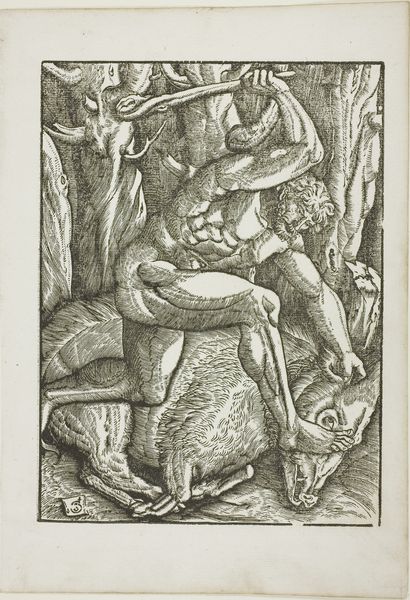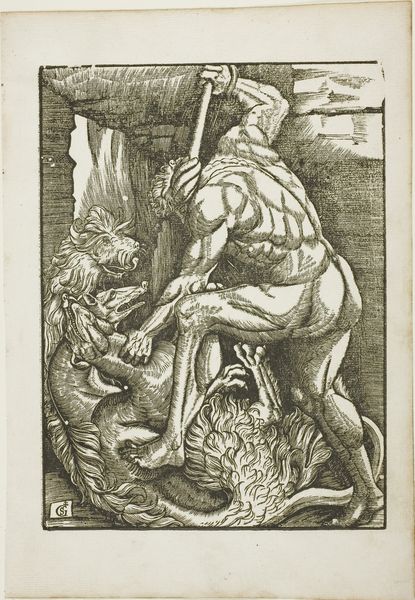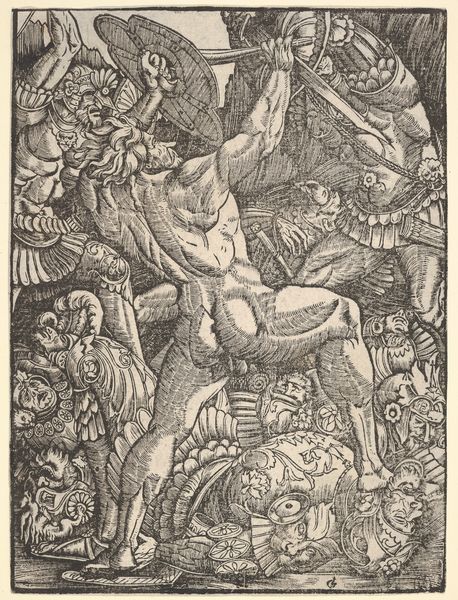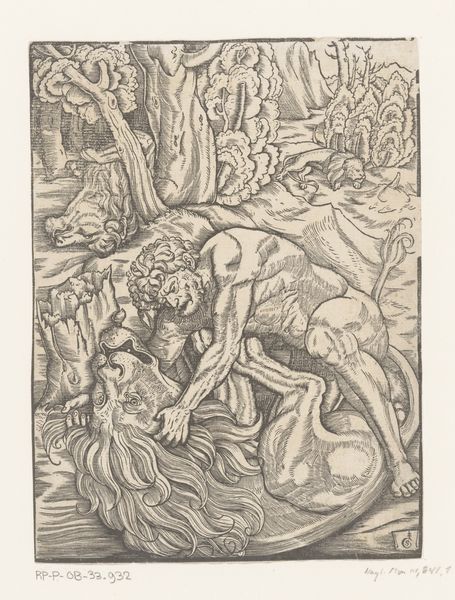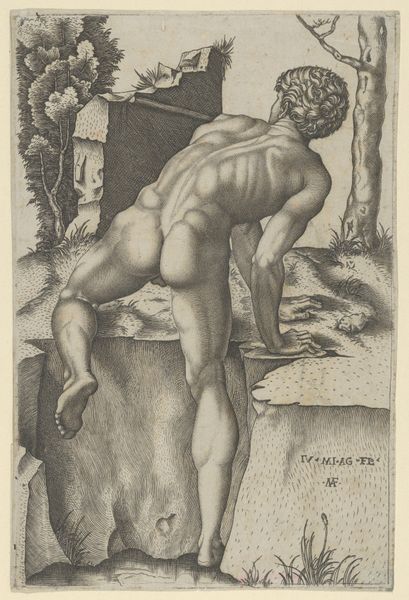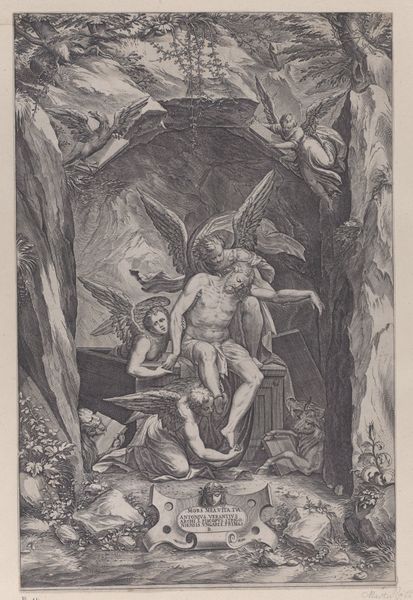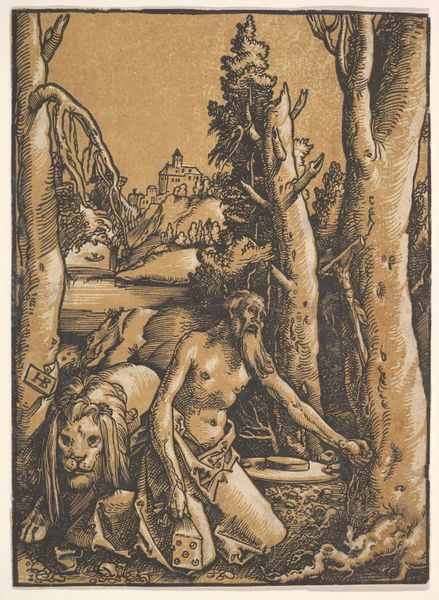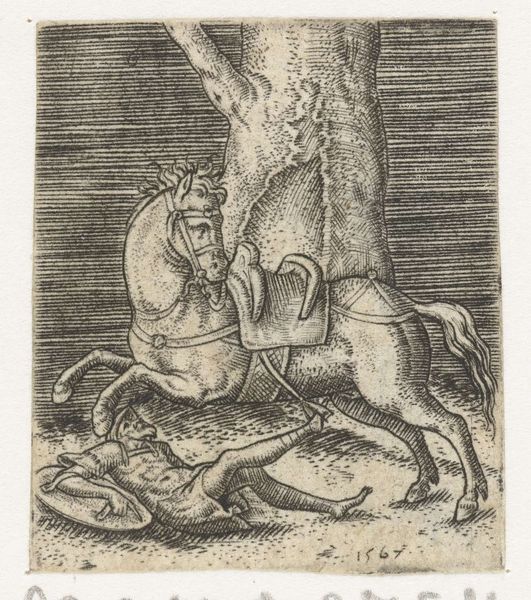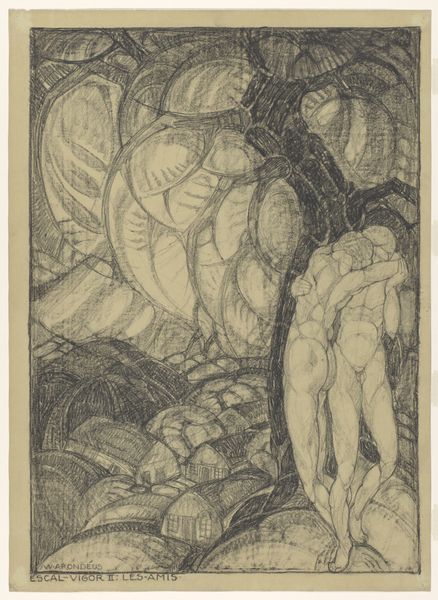
print, engraving
#
narrative-art
# print
#
pen illustration
#
pen sketch
#
pencil sketch
#
figuration
#
11_renaissance
#
pen-ink sketch
#
northern-renaissance
#
engraving
Dimensions: height 198 mm, width 144 mm
Copyright: Rijks Museum: Open Domain
Gabriel Salmon made this print, Hercules vangt het zwijn van Erymanthus, using a technique called engraving. Engraving is an intaglio process. The artist carves lines directly into a metal plate, often copper, using a tool called a burin. The plate is then inked, and the surface wiped clean, leaving ink only in the engraved lines. When paper is pressed against the plate, the image is transferred. The resulting print has a distinctive, crisp quality. Look closely, and you can see how the varying depths and thicknesses of the engraved lines create a sense of light, shadow, and volume. The labor-intensive nature of engraving meant that prints were valued as both artistic and commercial objects. This particular image depicts a mythological scene, and the choice of engraving lends a sense of classical refinement. Considering the material and the meticulous process of engraving, it is clear that printmaking was not just a means of reproduction, but a skilled craft.
Comments
No comments
Be the first to comment and join the conversation on the ultimate creative platform.
